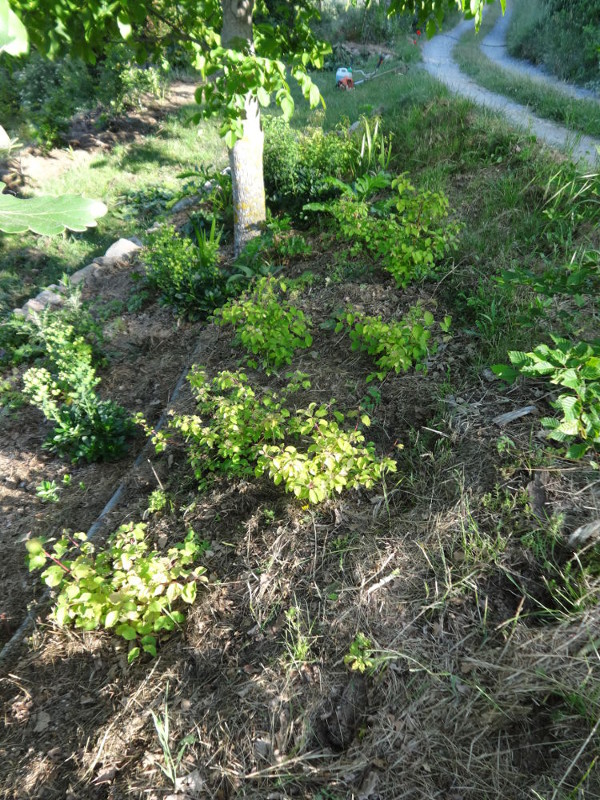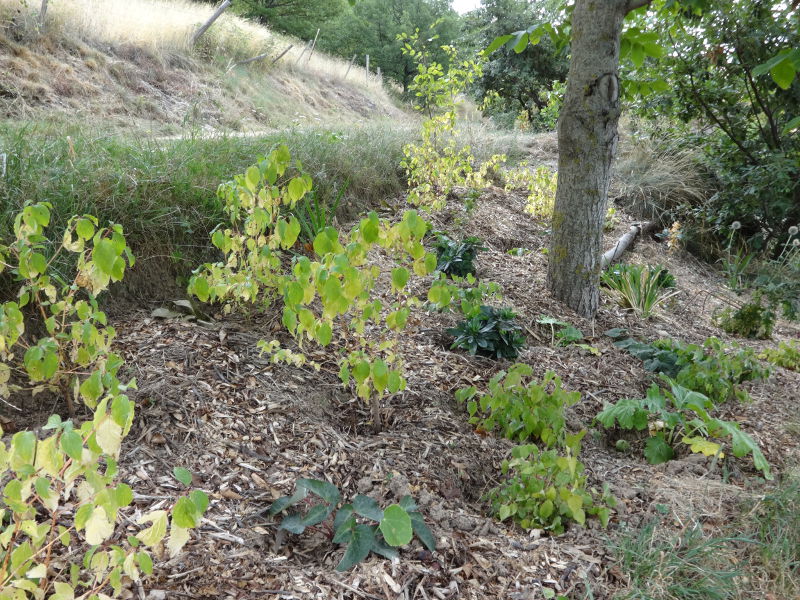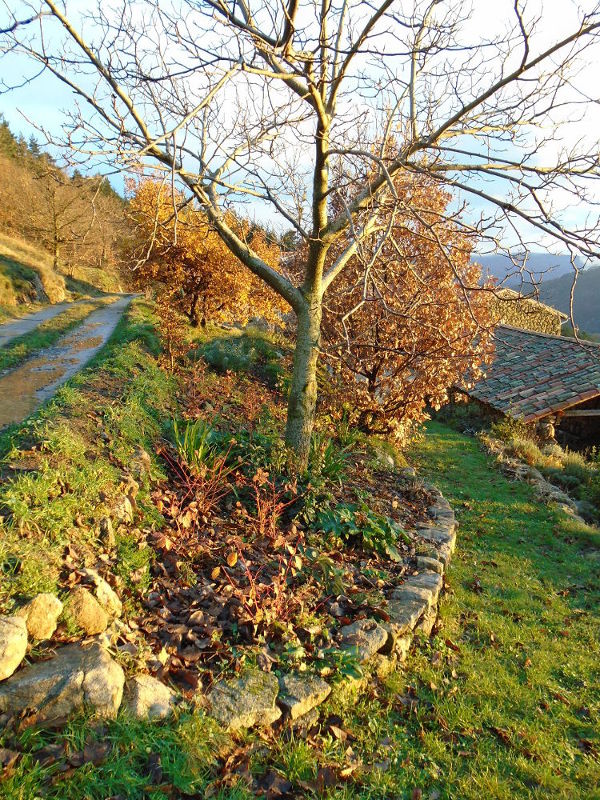The walnut bank – a woodland garden design
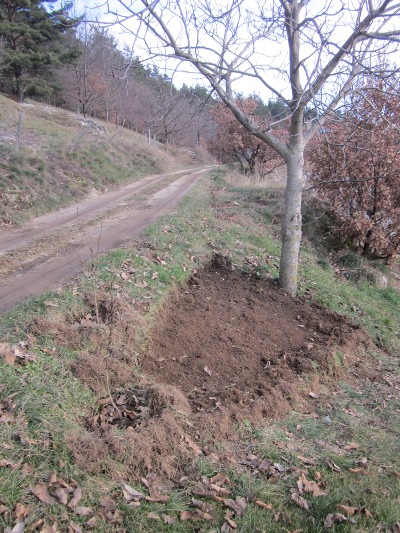 This is a small slice of the mountainside that makes me smile every time I plod past.
This is a small slice of the mountainside that makes me smile every time I plod past.
And it only came into existence because I was tired of mowing.
You can’t get the mower onto a small slope without suffering the consequences. And I do so loathe having to get out the strimmer all the time.
I noticed in the very beginning of taking on this farm that some parts were incredibly lush and mysterious. And this bank which is called the walnut bank for obvious reasons was full of knee-high grass. All the time. No matter how thoroughly I strimmed or mowed.
The walnut is one of two along this path and it was in sore need of a timid prune. I finally got fed up getting thwacked in the head when I was strimming underneath it. Everyone did that sharp hissing intake of breath when I mentioned the need to prune the walnut tree; but really. I just needed to raise the canopy a teensy bit and hope it wouldn’t make the tree cross.
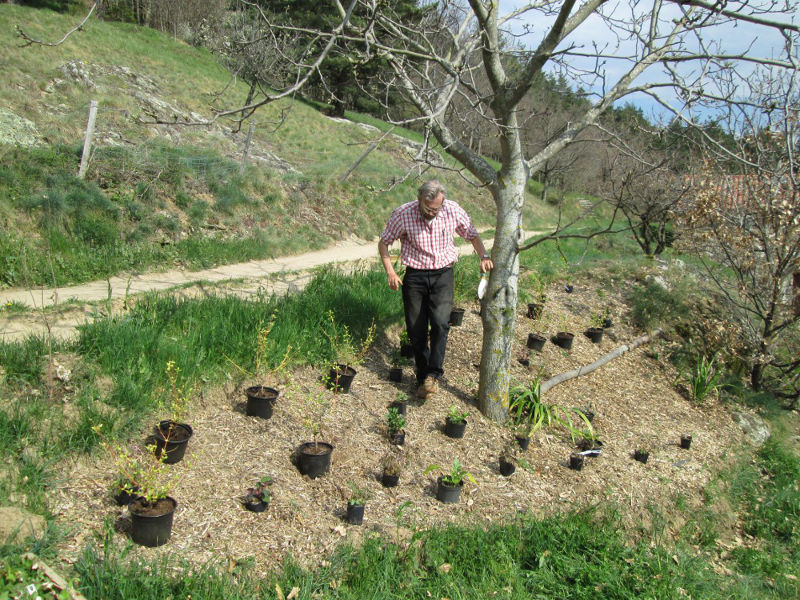 I cut off a few branches one early spring and nothing happened. That will teach me about obsessive reading of all the literature on nut trees. We self-taught gardeners tend to do way too much background reading.
I cut off a few branches one early spring and nothing happened. That will teach me about obsessive reading of all the literature on nut trees. We self-taught gardeners tend to do way too much background reading.
So once I had made the walnut a safer place to be near, it was time to have some fun.
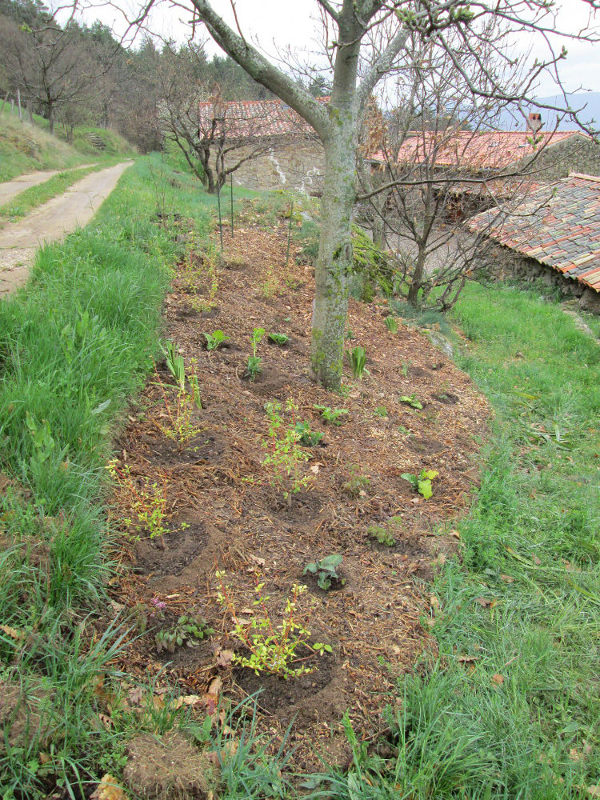 I was baffled to discover that although this entire garden is free draining acidic soul, there is a band of soil right over this bank and the road that is heavy clay. No wonder the road always floods after heavy rain and is slow to drain. You can see that it is right on the edge of the rough road that leads to our neighbour’s farm. And looking from above, it is positioned above the barn garden.
I was baffled to discover that although this entire garden is free draining acidic soul, there is a band of soil right over this bank and the road that is heavy clay. No wonder the road always floods after heavy rain and is slow to drain. You can see that it is right on the edge of the rough road that leads to our neighbour’s farm. And looking from above, it is positioned above the barn garden.
I dug out the grass. And then mulched heavily with wood chippings from the forest until I could beg my friend Andrew Wilkie for some design help.
Despite this bleak winter bareness, the walnut tree shades this bank entirely. So I needed some help in chosing some shrubs that would look interesting all year round.
Isn’t that what we all want from our gardens?
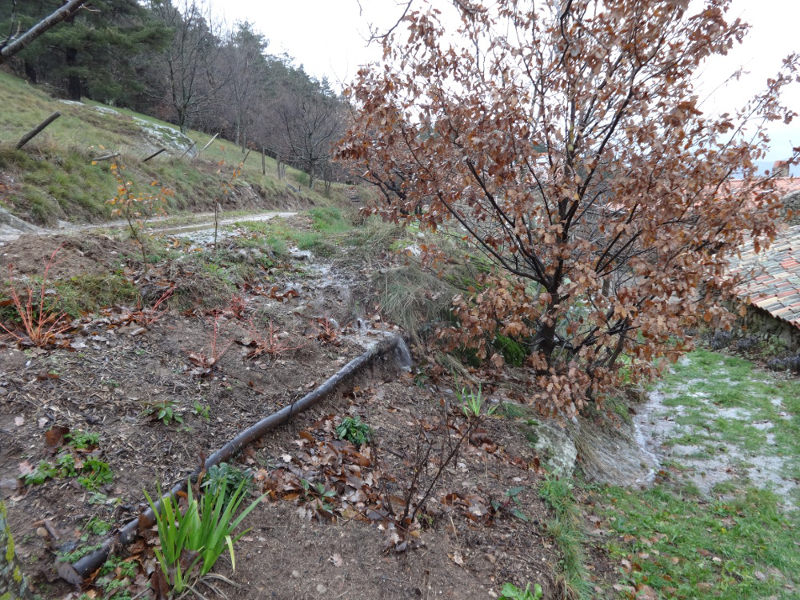 So in April 2013 Andrew drove up with an order from Plantagenet Plants full of woodland beauties. He placed them out, putting a line of cornus sanguinea midwinter fire (11) at the back, and then interspersed the bank with euphorbia robbiae (Mrs Robb’s Bonnet 4), iris foetidissima (3), acanthus mollis (5), epimedium x youngianum roseum (8) and helleborus argutifolius and externii boughton beauty (5).
So in April 2013 Andrew drove up with an order from Plantagenet Plants full of woodland beauties. He placed them out, putting a line of cornus sanguinea midwinter fire (11) at the back, and then interspersed the bank with euphorbia robbiae (Mrs Robb’s Bonnet 4), iris foetidissima (3), acanthus mollis (5), epimedium x youngianum roseum (8) and helleborus argutifolius and externii boughton beauty (5).
We transplanted a few euphorbia wulfenniis which I have all over the garden, and an echinops arctic glow came from the edge of the potager.
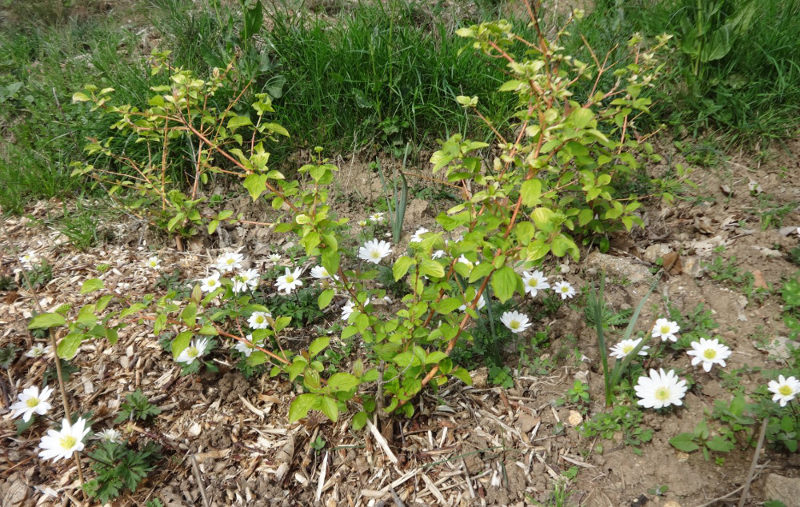 With the heavy clay soil I was less anxious about watering, but I mulched heavily in between the plants to keep down the rampant weeds.
With the heavy clay soil I was less anxious about watering, but I mulched heavily in between the plants to keep down the rampant weeds.
It did suffer flood damage in 2013 of course. That was more than enough watering.
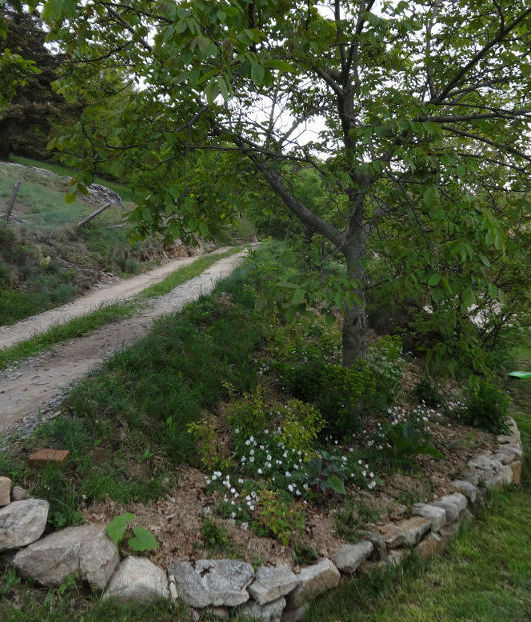 I was worried that I had lost all the white anemomes which I had planted a few weeks earlier. But amazingly they bloomed in spring as if to say, what flood?
I was worried that I had lost all the white anemomes which I had planted a few weeks earlier. But amazingly they bloomed in spring as if to say, what flood?
I put in two drains through this bed so that any excess flood water will be chanelled onto the grass, rather than through the epimediums.
And I took advantage of a lot of goodwill after the floods to beg some stones from the repair work and a few hours of Nicolas’ time to make me a small wall for the bank.
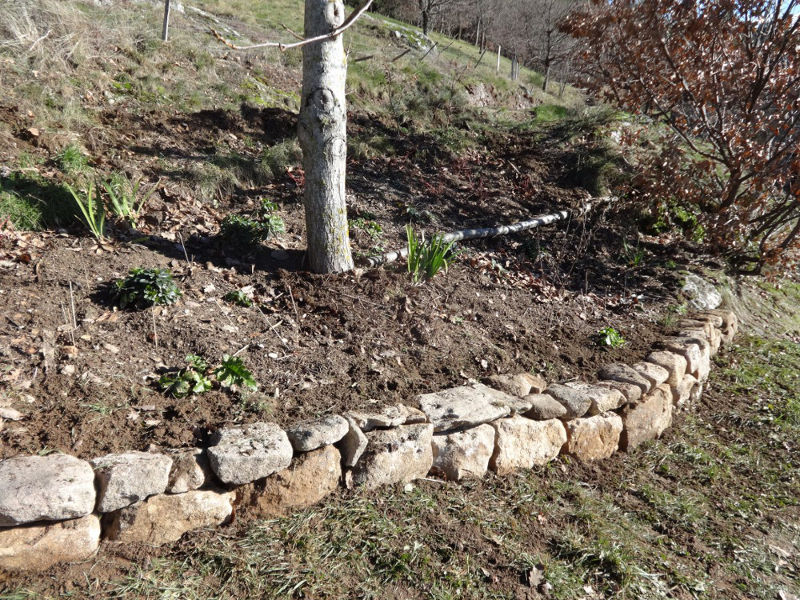 You can see that these little walls really complete the picture.
You can see that these little walls really complete the picture.
I was forever having to fuss about the lowest part of the bank which needed strimming when all the rest of the walnut path just needed a quick mow. So it was neglected.
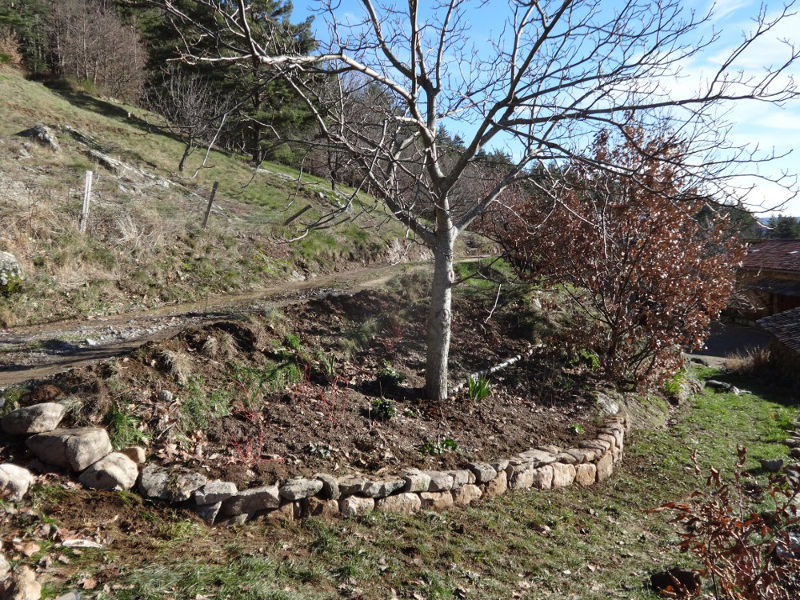 And now I could concentrate on nurturing the plants in the bank. They are remarkably easy to care for, so all I really need to do is keep down the weeds. And loot the euphorbias.
And now I could concentrate on nurturing the plants in the bank. They are remarkably easy to care for, so all I really need to do is keep down the weeds. And loot the euphorbias.
This shows how happy the euphorbia robbiaes are. I have little babies popping up everywhere. Well, not out of control everywhere; but enough to make me very happy.
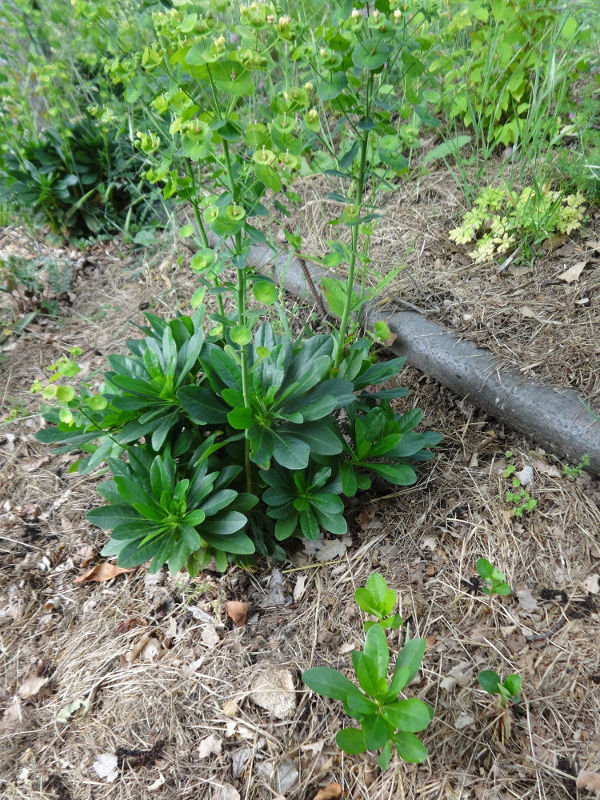
And now that I have stabilised the bank, and the plants are happy, I can work on my bulbs and alliums for future seasons.
